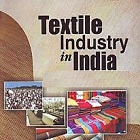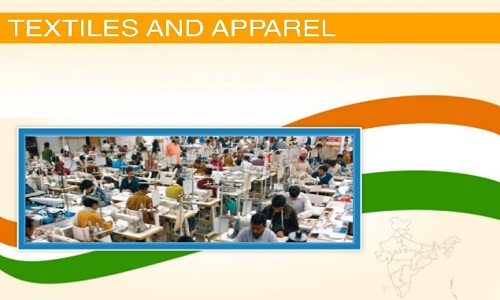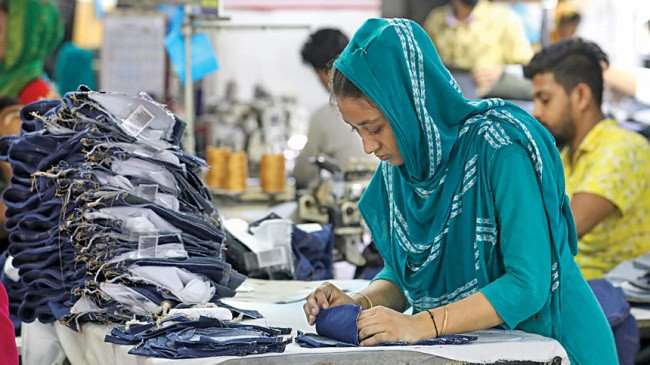FW
Texworld USA that took place from July 21 to 23 attracted a huge number of visitors and buyers to this edition. Texworld USA is the largest sourcing event in North America for apparel fabrics, research and product development specialists, designers, merchandisers and overseas sourcing professionals.
Exhibitors space increased by around 25 per cent this time compared to the 2014 summer edition. In total, 917 exhibitors from 40 countries presented their products from basics to novelties. Over the three day event, there was a steady flow of buyers including numerous big players and famous fashion brands looking for performance fabrics.
The summer edition of Texworld USA was held along with International Apparel Sourcing Show and Home Textiles Sourcing Expo. The textile industry fully participated in NYC Textile Week where various textile shows were staged for the first time concurrent in the same week.
The shows provided visitors access to full spectrum of sourcing options from apparel fabrics to garment manufacturing and finished soft goods for home. NYC Textile Week is an innovative concept that will establish New York as the destination for textile and sourcing professionals. Its alignment of textile and fashion trade shows will create assorted textile offerings for attendees visiting from countries around the world. NYC Textile Week was soft launched in January 2015.
www.texworldusa.com/
Germany's nonwoven manufacturer, Sandler manufactures nonwoven roll goods for wipes industry, home textiles as well as technical applications (automotive, filtration, construction and agriculture). The family-run company ranks among the top 15 nonwoven manufacturers worldwide.
Now, it’s planning a nonwoven production line for hygiene materials. This investment will take it one step closer towards the realisation of new textile concepts for hygiene products. Due to the level of softness and comfort , Sandler’s nonwovens find their main applications in areas such as top sheet of hygiene products, for example, baby diapers, sanitary pads, panty liners, tampons, incontinence pads and adult diapers.
Being an innovative partner, Sandler offers various production technologies at one location. Individual product solutions are developed in cooperation with partners from across the value chain.
Sandler’s product spectrum is unique in the industry. Corporate responsibility regarding sustainable practices in the economic, social and environmental context has always been an important element of Sandler’s corporate philosophy. Products for the home textile market include upholstery and outdoor furniture, mattresses and bedding, office design and interior acoustics.
www.sandler.de/
The number of garment and footwear factories in Cambodia has increased by 21 per cent in the past 16 months. Exports are up more than 10 per cent. Clothing and footwear make a significant contribution to Cambodia’s economic output.
The minimum wage has more than doubled since 2012. Cambodia’s monthly minimum wage level is lower than China, Philippines and Thailand but above that of Sri Lanka, Bangladesh and Pakistan. Garment manufacturing sector in Cambodia now employs 600,000 workers although this figure relates to the export sector only and does not include factories working as sub-contractors.
The burgeoning state of the industry has belied claims that increased minimum wages for workers would lead to a decline of the sector and the exit of inward investors. The buoyant state of the textile industry in Cambodia also offers a pointer for Myanmar where Korean investors are threatening to leave if new minimum wage legislation is implemented.
Cambodia enjoys duty-free export access to several important markets, including Canada, the European Union, Japan, Korea, New Zealand, and the US, a crucial advantage, but its low wage edge has eroded. Labour accounts for about a fifth of the country’s apparel manufacturing costs.
Human rights has been a tricky issue with Uzbekistan. And the US State Department’s 2015 Trafficking in Persons Report, published last month, confirms this once more. However, it does note the efforts made by Tashkent to reduce forced child labor. These efforts have prompted the US government to promote Uzbekistan from Tier III to Tier II on its watch list. This move has stunned the Cotton Campaign advocacy group. Cotton Campaign, whose aim is to end forced child and adult labour in Uzbekistan’s cotton industry, feels that the upgrade lets Tashkent off the hook.
Nadejda Ataeva, President of Association for Human Rights in Central Asia, feels the US had successfully sent a message to Uzbekistan authorities that forced labour of millions of its citizens was cost-free. In a letter to US Secretary of State John Kerry, the group has said, that the country’s government mobilised more than a million of its own citizens to harvest cotton last year and began this year by mobilising thousands more to prepare the fields for the upcoming harvest.
As per ‘Trafficking in Persons Report’, decreased reliance on children has resulted in the increasing forcible mobilisation of the adult population. The US State Department report said that refusal to work puts holdouts at risk of losing their jobs or social benefits. Private companies are pressured into enlisting their employees on pain of being subjected to punitive inspections.
The sector has undergone great reforms and changes have been effected primarily in output. The industry has tried to meet the growing demand for refined goods instead of raw material that Uzbekistan previously churned out. The group urged US officials to stress American companies operating in Uzbekistan the importance of fulfilling their human rights due diligence responsibilities, including by declining to contribute to the cotton harvest.
In a bid to scale up its operation in recycled polyester, textured yarn supplier, US-based Unifi is planning to increase production capacity at its Yadkinville manufacturing facility by up to 85,000 sq. ft. This has come in the backdrop of a high demand for textured polyester and nylon yarns in Brazil, China, North and Central America. The company for the fourth quarter saw an increase of $8.8 million in its net income, which stands at $15.5 million, while the net income for the 2015 fiscal year stood at $42.2 million. The firm’s net income last year was $28.8 million.
The chief operating officer Roger Berrier said they were doing well on the back of rising demand for their quality yarns, robust operating results from international markets and consolidated earnings from their equity affiliates.
Also, with the addition of texturing machines to support growth in demand for synthetic yarns and strategic capital projects prepared in 2015, they foresee a jump in domestic businesses in 2016. The company is expecting to see the benefits of expansion of Repreve Rycycling Center trickling down in the upcoming years. The firm’s net sales for the fiscal year 2015 was to some extent flat compared to the last fiscal year.
Italian company Thermore has launched a thermal booster, which aims at providing wearer greater comfort and functionality. Thermore makes thermal insulation for apparel and sleeping bags. The thermal booster smart insulation is available in two different weight variations to perfectly match most temperature range requirements.
It is a thermal insulation that can be used in apparels and offers efficient temperature control for outdoor activities, biker, or fashion enthusiast, who wants to feel both comfortable and warm in various weather conditions.
Most garments provide only static warmth because down feathers or synthetic polyfils work as static thermal insulations. They retain the same amount of thermicity, regardless of the outside temperature. Thermore’s thermal booster is a smart insulation that extends the comfort zone by keeping users warm over a wider range of temperatures.
It maintains higher warmth as long as the temperature is low. If the temperature increases, it automatically re-tunes to warmer temperature, keeping the person in the comfort zone. The effect is also said to be consistent and durable even after repeated washing cycles and heavy duty wear.
Thermore was founded in 1972. It has operations in Europe, US and Asia, including production facilities in Thailand and offices in Hong Kong.
www.thermore.com/
The Office for Harmonization in the Internal Market (OHMI) has come out with a fresh report on the economic cost of IPR infringement in the footwear, accessory and clothing sector. As per the report, the sector loses more than €26 billion in revenue every year. This in turn leads to approximately 500.000 job loss. For years, EURATEX (European Apparel and Textile Confederation), which represents the textile and clothing industry, has been alerting EU institutions and national authorities about counterfeiting and piracy in the sector. It has been making EU aware of the consequences of these factors on the entire European economy.
The OHMI’s report shows that the costs of IPR breach, which results in job losses, loss of profit and in some cases, closures of SMEs is very high. According to the report, 9.7 per cent sales are lost due to counterfeiting, €26.3 billion of revenue is lost per year, €17 billion of sales are lost in related sectors, 3,63,000 direct jobs are lost, while 5,18,281 direct and indirect jobs are lost and €8.1 billion of government revenue is lost.
EURATEX has urged the EU for some constructive action to tackle counterfeiting and piracy challenges that face the textiles and clothing industry.
RmKV, manufacturer and retailer of silk saris, has introduced a modernised pneumatic handloom to eliminate the physical strain of handloom weaving and to attract the younger generation to the industry. The pneumatic loom utilises compressed air to lift the assembly and an electronic jacquard controller, with an inbuilt design base.
The jacquard controller can easily be integrated with a regular handloom and reduces the time taken to produce a sari. Earlier, it took one month to weave two or three saris, but with this technology, 15 saris can be produced.
Weaving a simple sari using the traditional method would require at least 5,000 cards and it could go up to as high as 1.5 lakh cards for complicated designs. Using the pneumatic loom saves time as designs are stored in the memory chip which could be easily changed by the weaver with practice.
The past decade witnessed a reduction in the number of weavers across the country. Kanchipuram, which used to have 50,000 weavers, now has only 10,000. Since weaving is labor intensive, it wears down people after 15 to 20 years of constant work. Women refrained from participating in weaving as it involved physical strain. But now, with easy operation, women can get involved.
https://www.rmkv.com/

The textile industry plays a major role in the economic life of the country and contributes greatly to industrial output, employment generation and export earnings as well. The industry’s contribution to industrial production in 14 per cent, to India’s GDP, it is 4 per cent and it constitutes 13 per cent to the country’s earnings. By 2016-17, the domestic textile and apparel industry in India is estimated to reach $100 billion this period.
The textile industry in India is diverse with the hand-spun and hand-woven sector at one end, and the capital-intensive, sophisticated mill sector at the other. Besides, the close link to the ancient culture and traditions of the country and the agriculture make it unique when compared to other countries. This also provides the industry with the capacity to produce a variety of products, which are suitable for different market segments, both within and outside the country.

The industry has a potential to grow five-fold over the next 10 years and touch the $500 billion mark on the back of growing demand for polyester fabric. This includes domestic sales of $315 billion and exports of $185 billion. Currently, the domestic market comprises of $68 billion and exports of $40 billion. The total fabric production in the country is expected to grow to 112 billion square metres by 2016-17. Moreover, India’s fibre production is expected to reach 10 million tonnes in the same period.
Export & Import
One of the mainstays of the national economy, the country textiles and clothing industry is also the largest contributing sectors to its export across the world. The exports of the textiles and clothing is estimated to go to $64.41 billion by the end of March, 2017 as predicted by Working Group constituted by the Planning Commission. In 2015, export of textile products increased marginally by 0.46 per cent to $37,137.32 million as compared to $36,967.56 million in last year.
Also, India is not dependant on import when it comes to textiles. Majority of import takes place for re-export or special requirement. In the fiscal year 2015, the import of textile products increased by 13.98 per cent touching $5,511.95 million as compared to $4,835.93 million in 2014. The textile industry is trying to get a duty cut on man-made fibre as high cost of the key raw material for making blended garments is making Indian goods uncompetitive in the global market. The industry is in consultation with the finance and revenue departments regarding this. Man-made fibre draws and excise duty of 12.5 per cent, but it has import restrictions. These lead to a cumulative duty of 29 per cent.
Bright future for the industry
The last five years have seen a spurt in investment sin the textile industry. All segments of the industry, including the dyed and printed attracted foreign direct investment (FDI) worth $70.82 million or Rs 444.43 crore during April 2015.
The government too has launched various schemes to support the industry. Minister of State for Textiles launched a scheme to promote usage of Geotechnical Textiles in the North Eastern Region of India, at Imphal. The government has also launched a new institution, Handicrafts & Carpet Sector Skill Council to promote skill development among artisans, crafts people and workers at grassroots level. The corporates too are supporting the industry in many ways with various partnerships and joint ventures with players from the industry.
Overall, the future for the textile industry looks very promising in both ways—domestic as well as international.
According to the Pakistan Bureau of Statistics, the country’s exports of value-added textile products went up by 7.5 per cent to $4.517 billion in 2014-15 from $4.202 billion a year ago. Exports of readymade garments grew 10.5 per cent to $2.101 billion from $1.909 billion, while knitwear rose 5.37 per cent to $2.416 billion compared to $2.293 billion during the previous year.
The government support of Rs 6 billion during FY 15 as against Rs 3 billion during 2014, helped achieve these figures. This was mostly extended to the value-added textile sector. This clearly shows the government’s intention to remove imbalance in the exports sector to create jobs for the youth. Besides, preferential access to the 28-nation European Union under GSP+ scheme is also one more reason for the rise in these exports.
Also, a five-year textile policy to promote the segment, which is incentive heavy has been implemented by the government. A textile package of Rs 40.6 billion would require an ongoing firm commitment from the finance ministry and other relevant authorities. However, another Rs 23 billion development infrastructure projects foreseen in the policy would need approval from the Planning Commission, which is quite a difficult task. The government announced Rs 188 billion for the previous textile policy (2009-2014), but actually released Rs 28 billion.
Moreover, as the world is continuously moving from cotton to man-made fibre, the announcement of deemed import basis for PSF (Polyester Staple Fibre) will augment man-made fibre content in export products. The ratio has reversed from 60-40 to 40-60 within 10 years and in Pakistan, the ratio is 86-14, which is quite low according to international demands.












